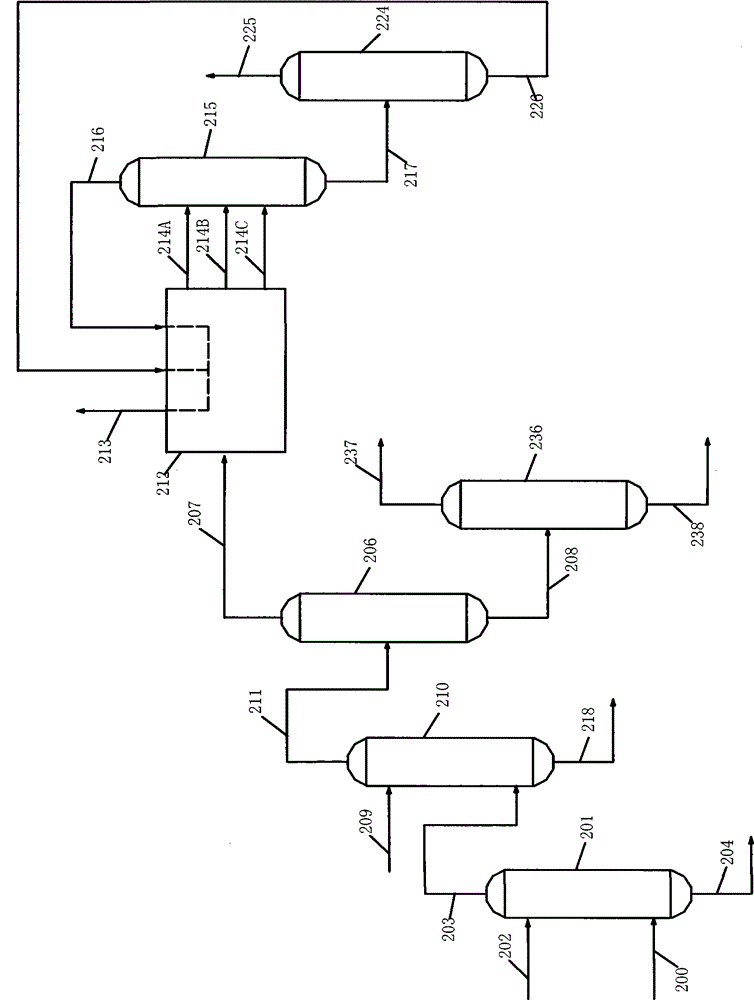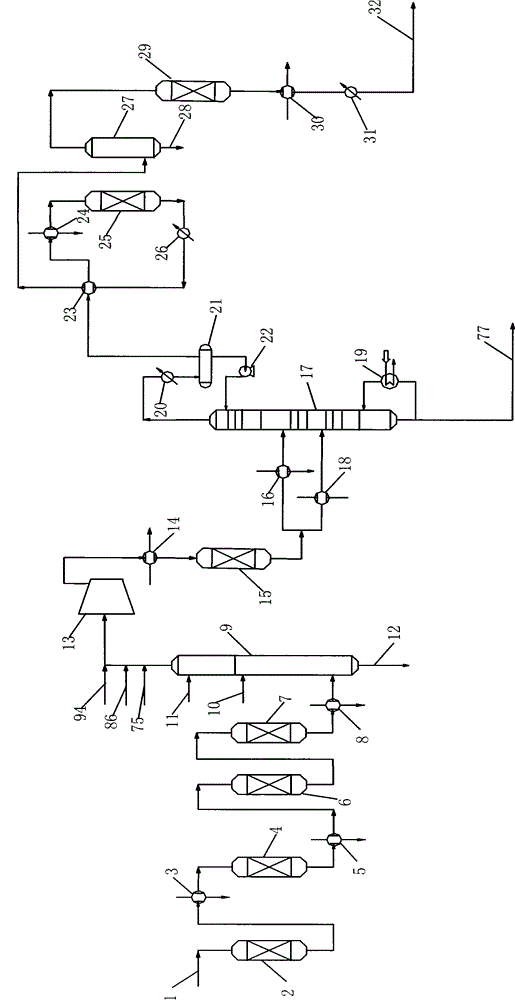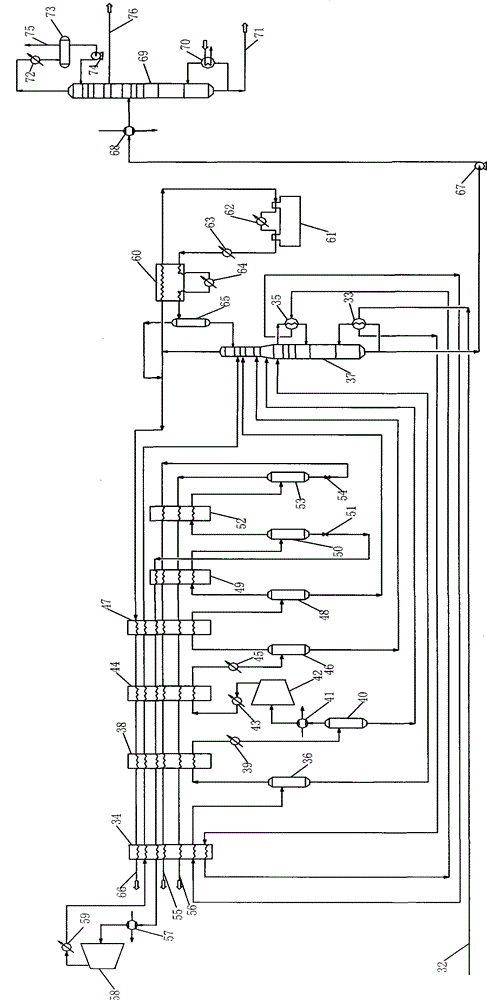Technology for separating low carbon olefin gases
A technology for low-carbon olefins and processes, which is applied in the purification/separation of hydrocarbons, hydrogen separation, cold treatment separation, etc., and can solve the problems of inability to obtain purity and effective removal
- Summary
- Abstract
- Description
- Claims
- Application Information
AI Technical Summary
Problems solved by technology
Method used
Image
Examples
Embodiment Construction
[0100] Such as figure 2 As shown, in addition to ethylene and propylene, it also includes one or more mixtures of hydrogen, oxygen, nitrogen, carbon monoxide, carbon dioxide, methane, ethane, acetylene, propane, cyclopropane, propyne and propadiene as Methanol conversion to produce light olefins gas removal of oxygenates, water and C 4 and C 4 The low-carbon olefins stream after the above hydrocarbons passes through the first dryer 2 (built-in) through the low-carbon olefins stream line 1 Molecular sieve) for primary dehydration (note: water is trace water entrained by the low-carbon olefin stream), and after heat exchange in the first heat exchanger 3, it enters the carbon monoxide removal tank 4 (built-in carbon monoxide removal copper-based catalyst, such as C 18 catalyst) to remove most of the carbon monoxide, and the low-carbon olefins stream cooled by the first cooler 5 enters the second dryer 6 (built-in Molecular sieve) for intermediate dehydration, and then ente...
PUM
 Login to View More
Login to View More Abstract
Description
Claims
Application Information
 Login to View More
Login to View More - R&D
- Intellectual Property
- Life Sciences
- Materials
- Tech Scout
- Unparalleled Data Quality
- Higher Quality Content
- 60% Fewer Hallucinations
Browse by: Latest US Patents, China's latest patents, Technical Efficacy Thesaurus, Application Domain, Technology Topic, Popular Technical Reports.
© 2025 PatSnap. All rights reserved.Legal|Privacy policy|Modern Slavery Act Transparency Statement|Sitemap|About US| Contact US: help@patsnap.com



